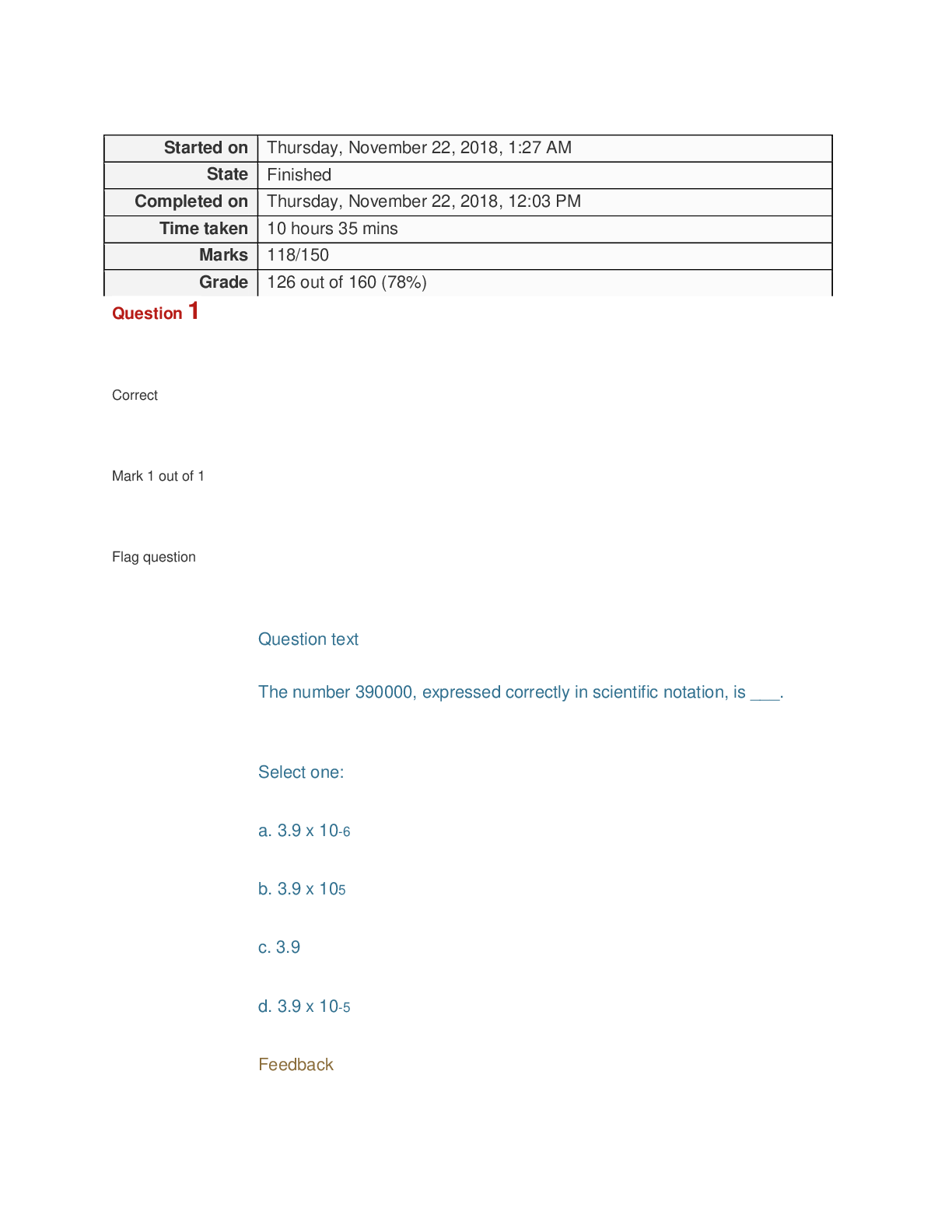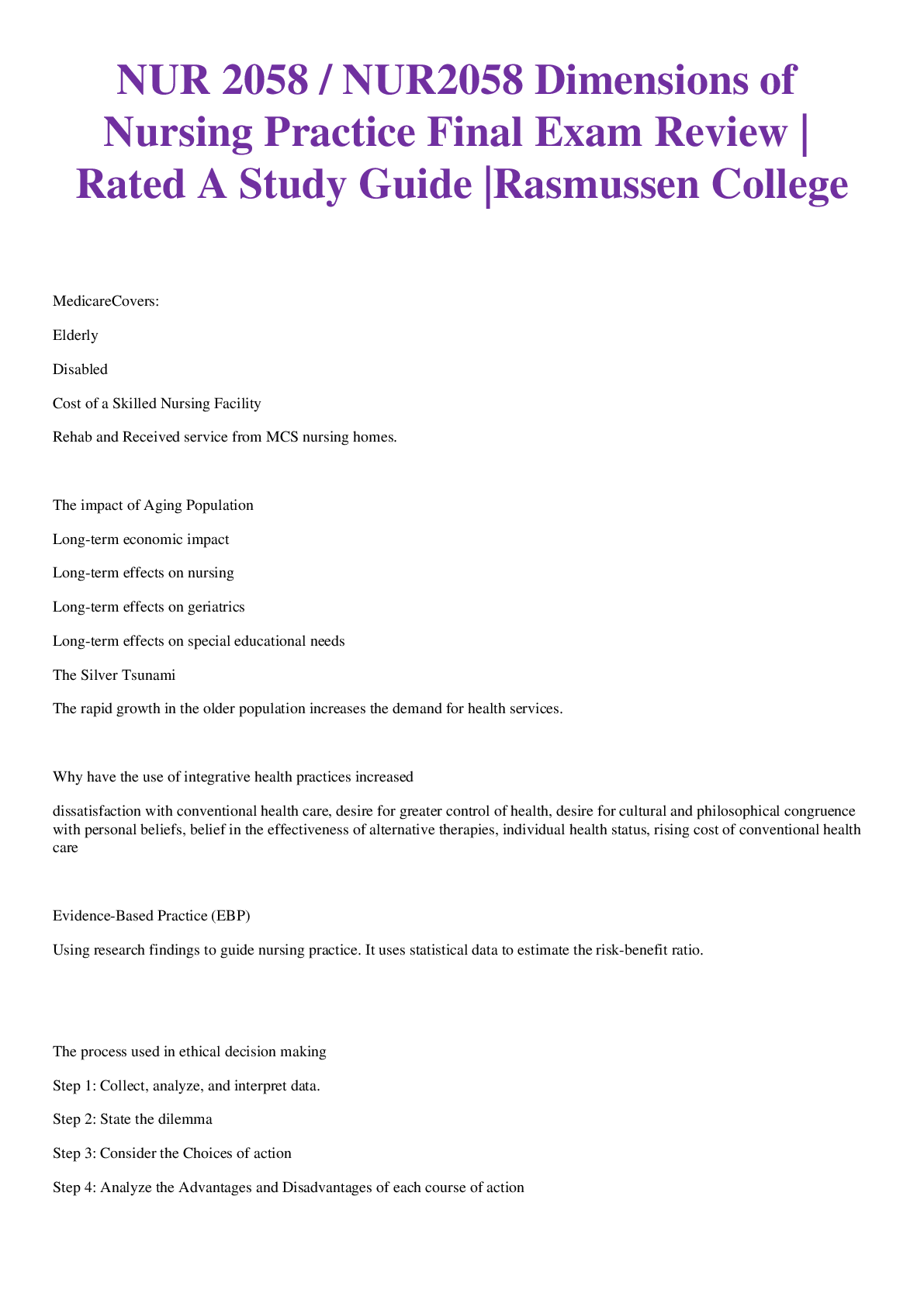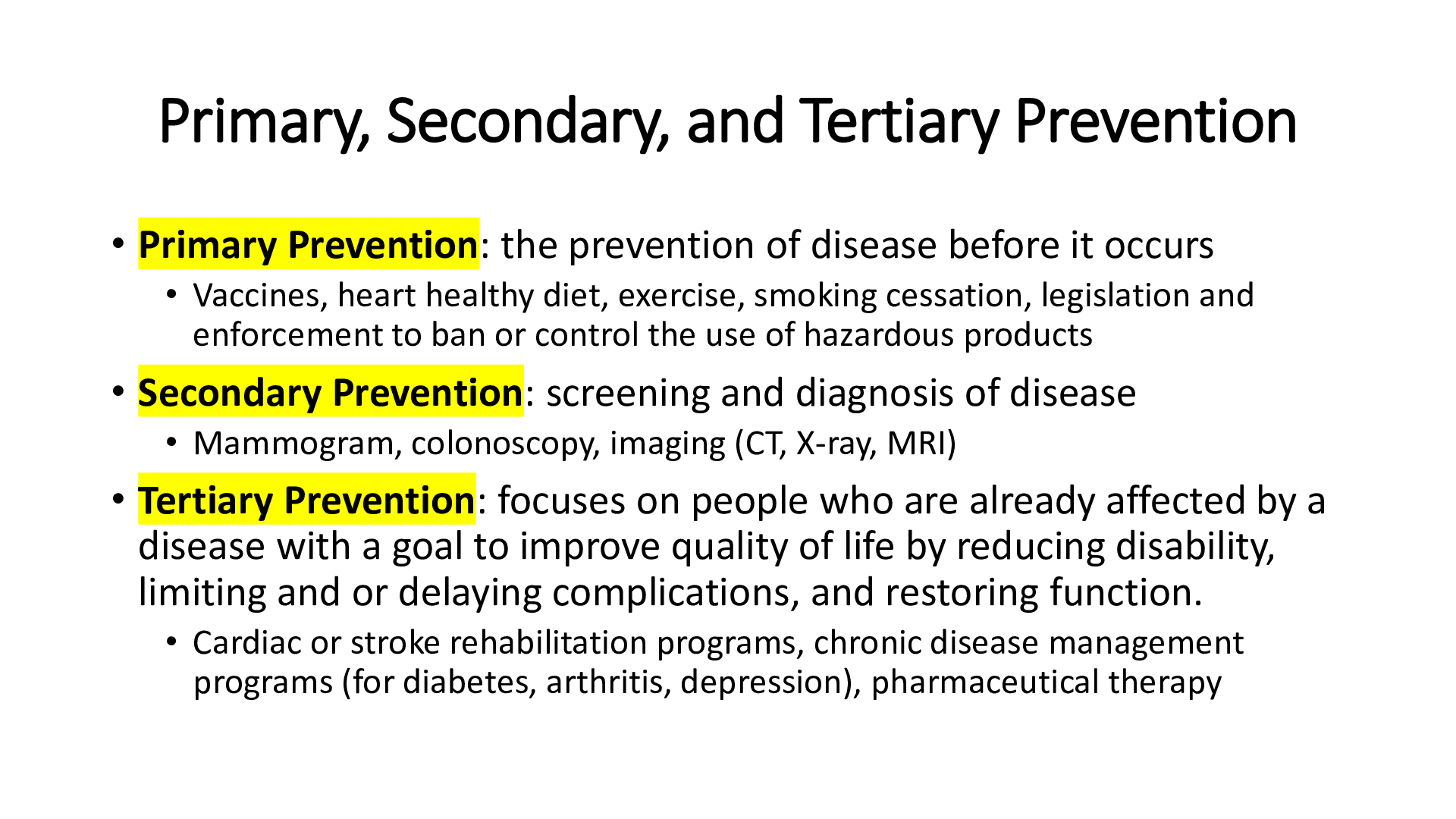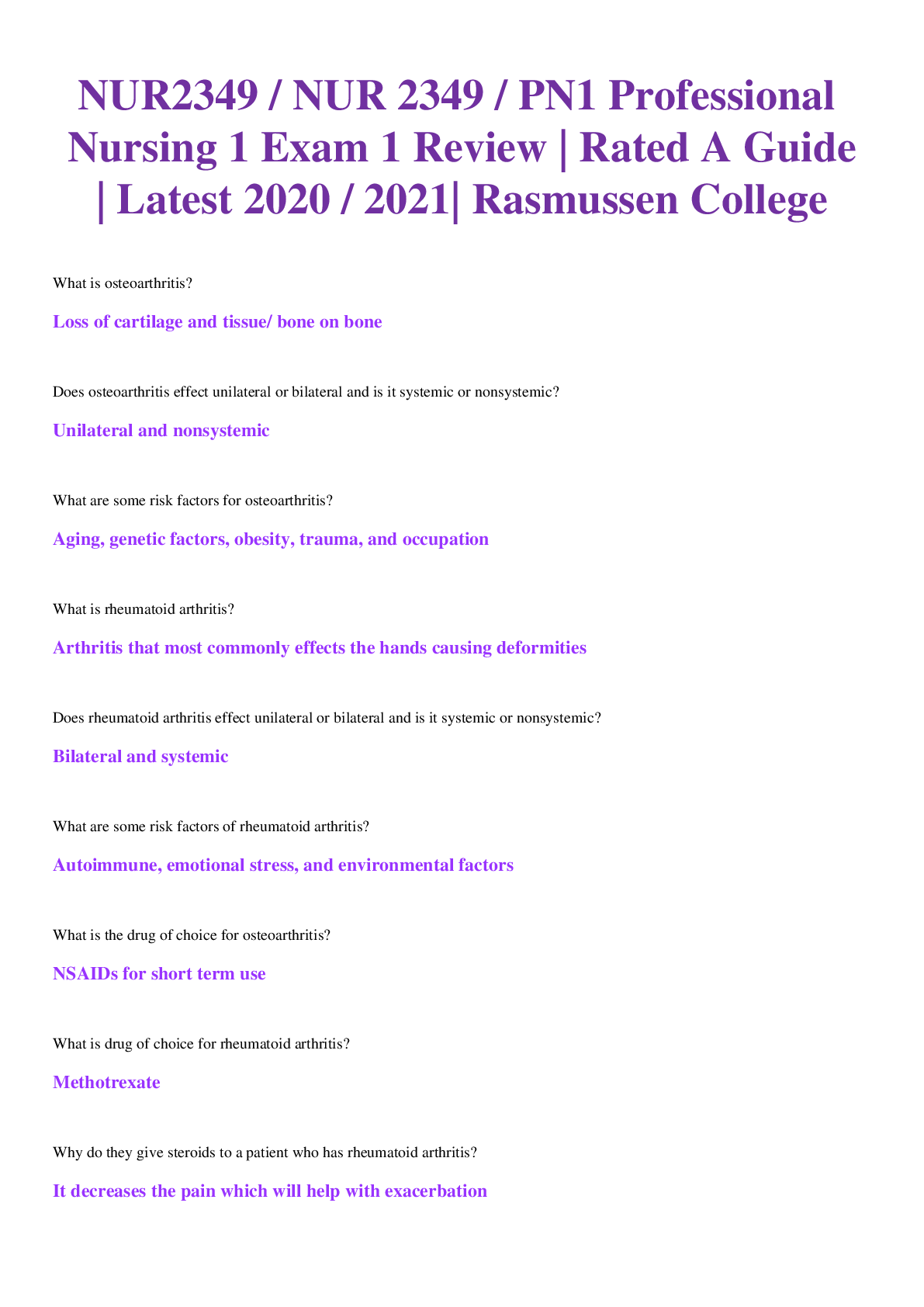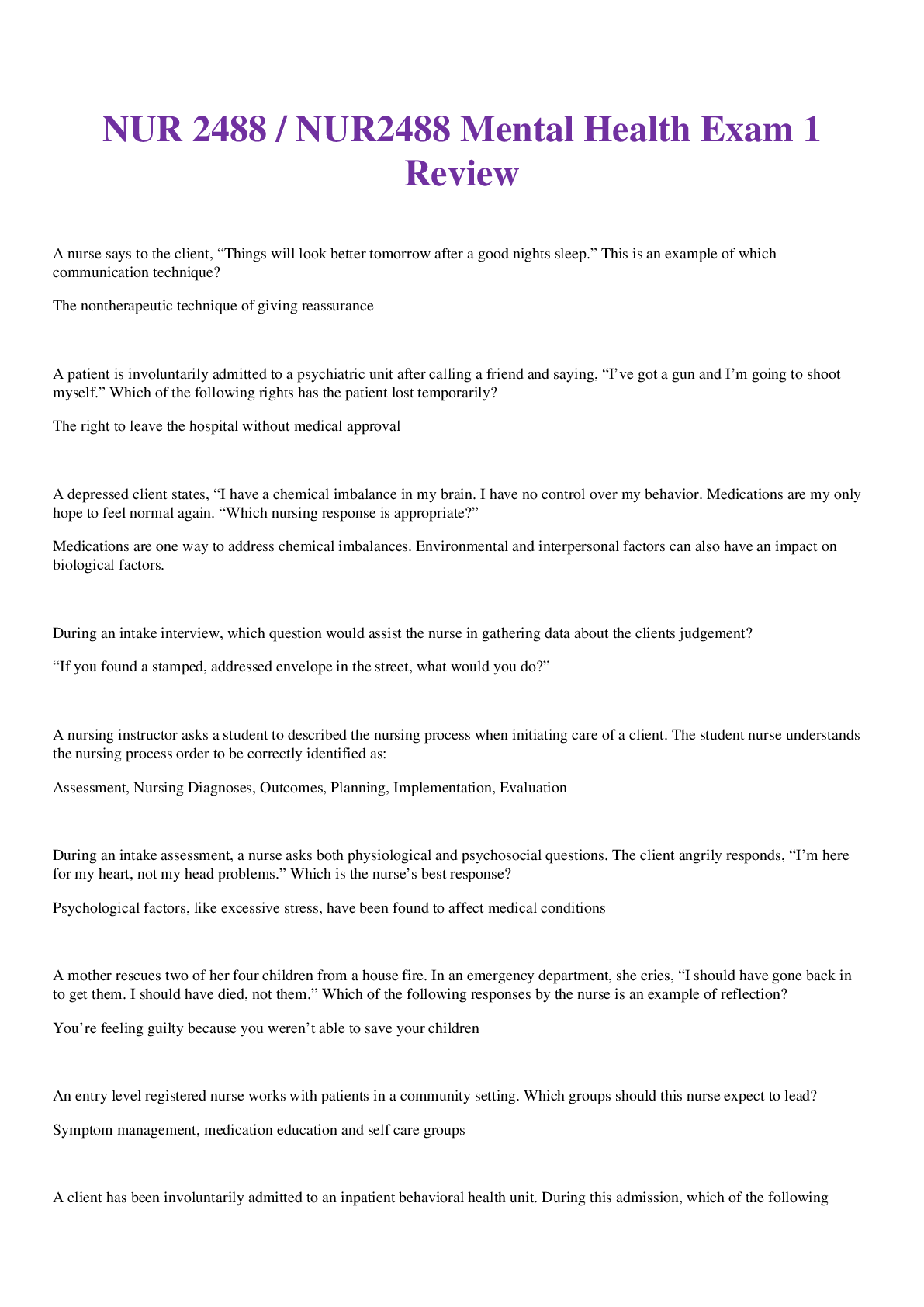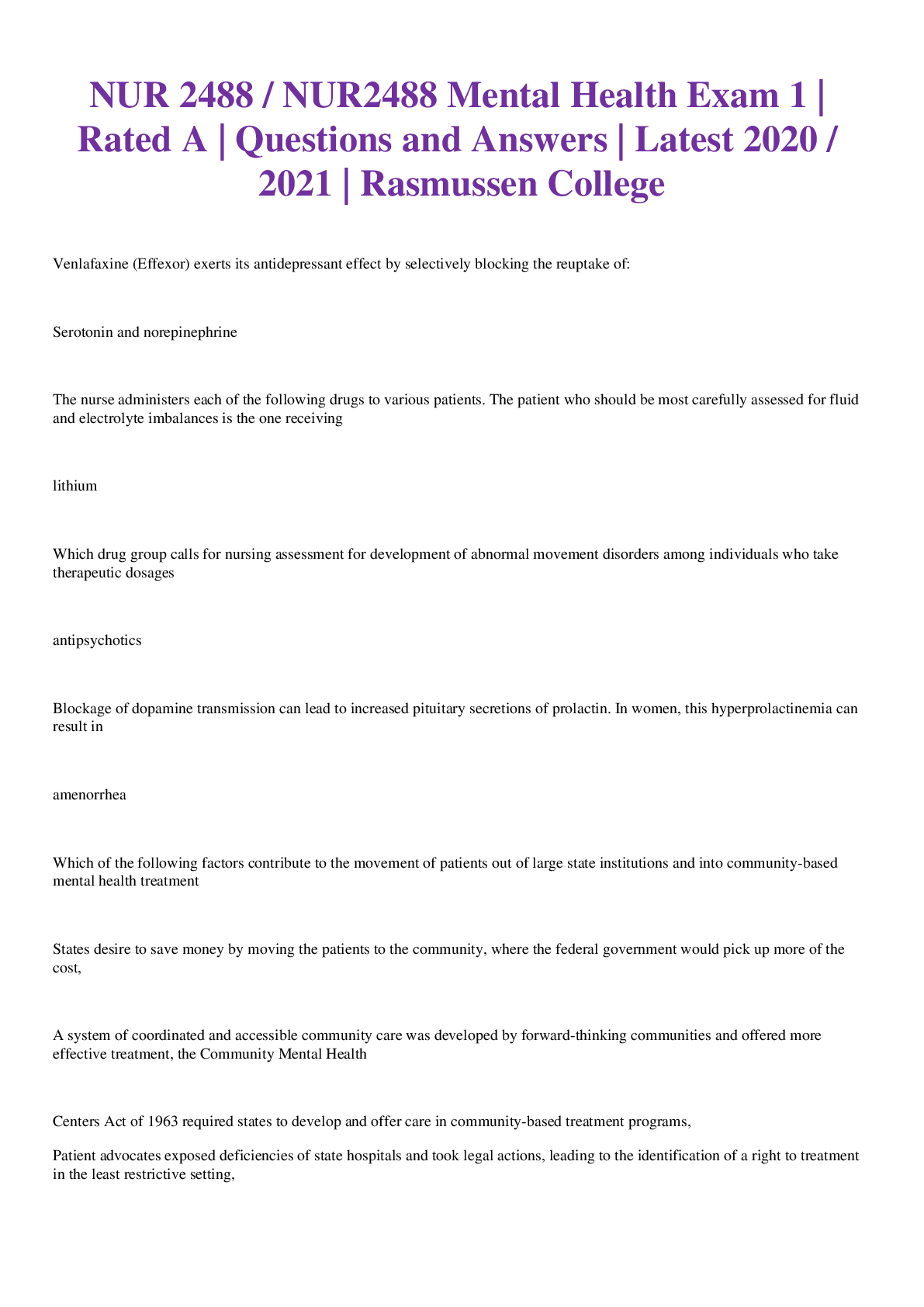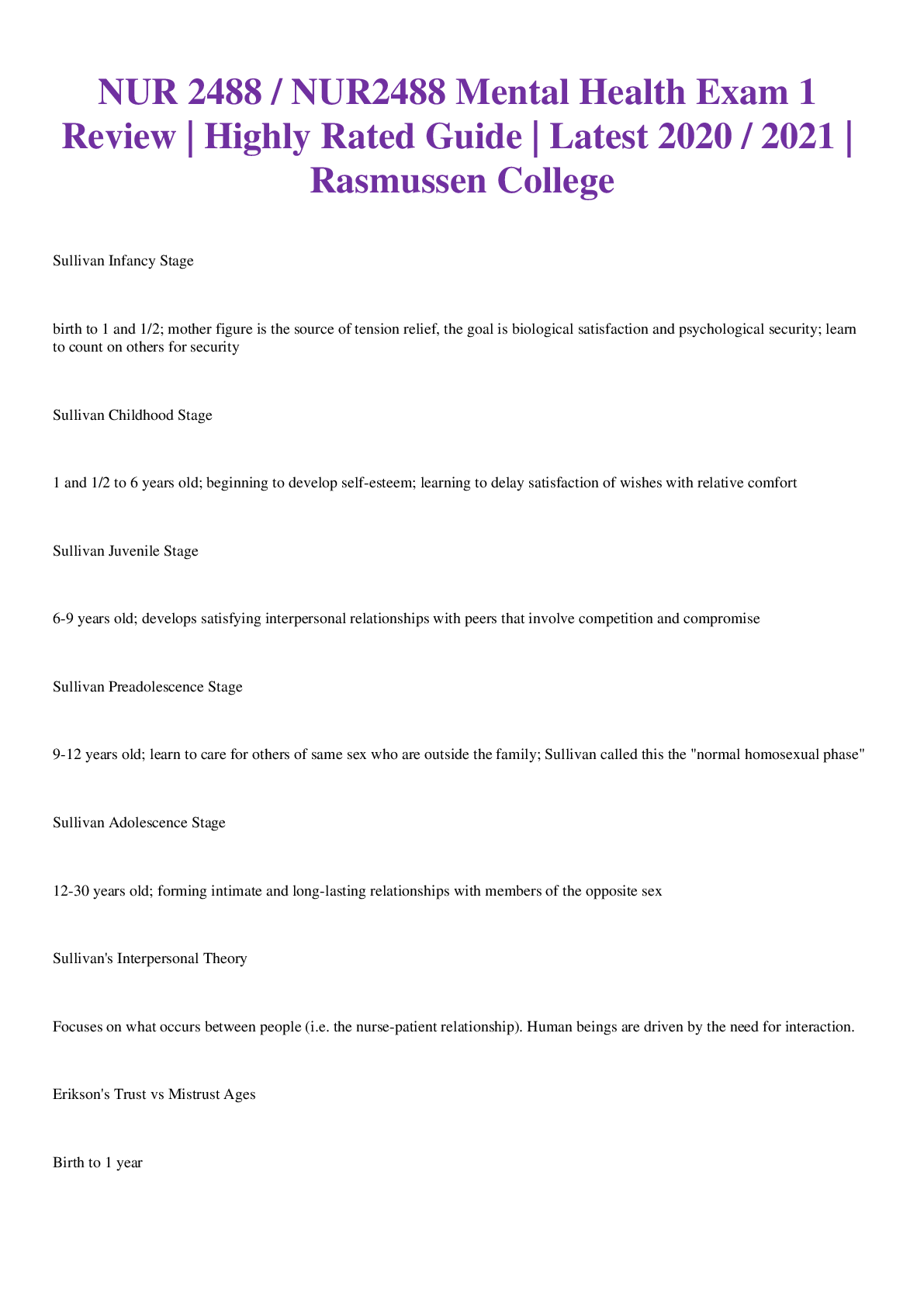*NURSING > EXAM REVIEW > Concorde Career Colleges - NURSING 240 EXAM REVIEW (All)
Concorde Career Colleges - NURSING 240 EXAM REVIEW
Document Content and Description Below
1. A home care nurse is instructing a client with hyperemesis gravidarum about measures to ease the nausea and vomiting. The nurse tells the client to: A. Eat foods high in calories and fat B. L... ie down for at least 20 minutes after meals C. Eat carbohydrates such as cereals, rice, and pasta Correct D. Consume primarily soups and liquids at mealtimes Rationale: Low-fat foods and easily digested carbohydrates such as fruit, breads, cereals, rice, and pasta provide important nutrients and help prevent a low blood glucose level, which can cause nausea. Soups and other liquids should be taken between meals to avoid distending the stomach and triggering nausea. Sitting upright after meals reduces gastric reflux. Additionally, food portions should be small and foods with strong odors should be eliminated from the diet, because food smells often incite nausea. A nurse is caring for a client with preeclampsia who is receiving a magnesium sulfate infusion to prevent eclampsia. Which finding indicates to the nurse that the medication is effective? E. Clonus is present. Incorrect F. Magnesium level is 10 mg/dL. G. Deep tendon reflexes are absent. H. The client experiences diuresis within 24 to 48 hours. Correct Rationale: Magnesium sulfate is effective in preventing seizures (eclampsia) if diuresis occurs within 24 to 48 hours of the start of the infusion. As part of the therapeutic response, renal perfusion is increased and the client is free of visual disturbances, headache, epigastric pain, clonus (the rapid rhythmic jerking motion of the foot that occurs when the client’s lower leg is supported and the foot is sharply dorsiflexed), and seizure activity. Hyperreflexia indicates cerebral irritability. Clonus is normally not present. The therapeutic magnesium level is 4 to 8 mg/dL. Reflexes range from 1+ to 2+ but should not be absent. A client with preeclampsia who is receiving magnesium sulfate in an intravenous infusion exhibits signs of magnesium toxicity. The nurse immediately prepares for the administration of: I. Vitamin K J. Protamine sulfate Incorrect K. Calcium gluconate Correct L. Naloxone hydrochloride Rationale: Calcium gluconate is the antidote to magnesium sulfate because it antagonizes the effects of magnesium at the neuromuscular junction. It should be readily available whenever magnesium is administered. Vitamin K is the antidote in cases of hemorrhage induced by the administration of oral anticoagulants such as warfarin sodium (Coumadin). Protamine sulfate is the antidote in cases of hemorrhage induced by the administration of heparin. Naloxone hydrochloride is administered to treat opioid-induced respiratory depression. A nurse instructs a pregnant client about foods that are high in folic acid. Which item does the nurse tell the client is the best source of folic acid? [Show More]
Last updated: 1 year ago
Preview 1 out of 29 pages

Reviews( 0 )
Document information
Connected school, study & course
About the document
Uploaded On
Nov 06, 2020
Number of pages
29
Written in
Additional information
This document has been written for:
Uploaded
Nov 06, 2020
Downloads
0
Views
51













